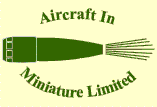Aircraft In Miniature Limited reserve the right to add, alter, or delete parts in their kits or other products
without prior notification in the interests of quality control, production, or product improvement.
Aircraft In Miniature Limited
19 Watling Street, Nuneaton, Warwickshire, CV11 6JJ, England
E-mail: info@aim72.co.uk
Copyright © 2009-2018 Aircraft in Miniature Limited. All rights reserved.


HINTS & TIPS
LASER PRINTED DECALS
We produce laser-printed decals to give the modeller a wide range of liveries for our airliners and also for some ground equipment models. They are used to give good quality decals at a realistic cost for low volume production, but they do need careful trimming before use. They are produced by printing onto sheets of white or clear carrier film with a laser printer, where the toner is fused to the carrier film at a high temperature. This has the advantage over inkjet printed decals that they do not need to be sealed to make them waterproof.
This fused toner is fairly brittle and even when cut with a sharp blade or scissors, it can ‘flake’ on the edge of the cut, to leave a thin line when the decal is printed on white carrier film. To solve this problem, we suggest that you:
1. Use a new blade when trimming straight lines, or very sharp scissors for curves.
2. Leave a small strip of the background colour around the image when trimming the decal from the sheet.
3. Apply the decal and let it dry thoroughly.
4. Touch up any chips in the toner with paint to match the background.
ETCHED METAL PARTS
Assembly tip - because etching is not a precise process, it may make folding a part easier if you increase the depth of the etched fold lines on the inside of the fuselage. Use the end of a razor saw and increase the depth of the slot to approximately 75% of the material thickness.
We find a folding tool for etched parts very useful - the one we use is called an ‘Etchmate’ and it is available from Hannants.
RESIN PARTS
Sometimes resin parts can become warped or deformed. When resin is cast, the part has ‘a memory’ of its original form, and hot water can be used to restore the original shape.
WARNING - BE VERY CAREFUL WHEN USING HOT OR BOILING WATER AND ALWAYS KEEP IT AWAY FROM CHILDREN.
Put some boiling water into a suitable dish or tray and put the warped part into the water. Leave the part in the water until it has cooled. If this does not work, put the part in hot water again, let it soften and then bend the part gently with your fingers to the correct shape.
Some people then put the part into a freezer for a time to ‘lock’ the new shape in.